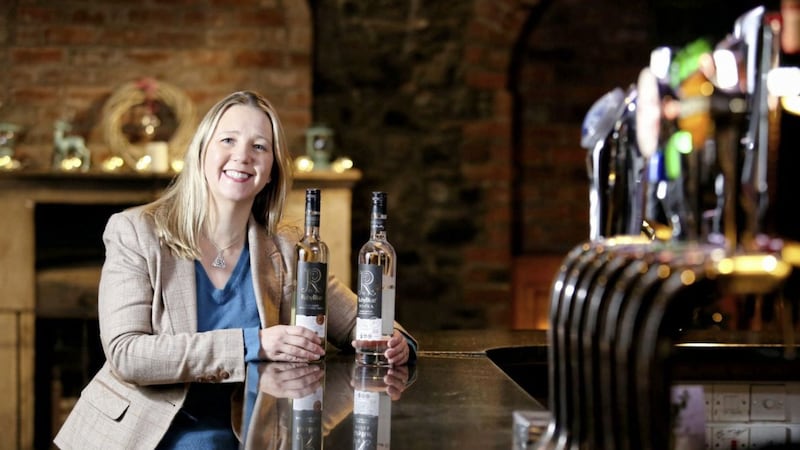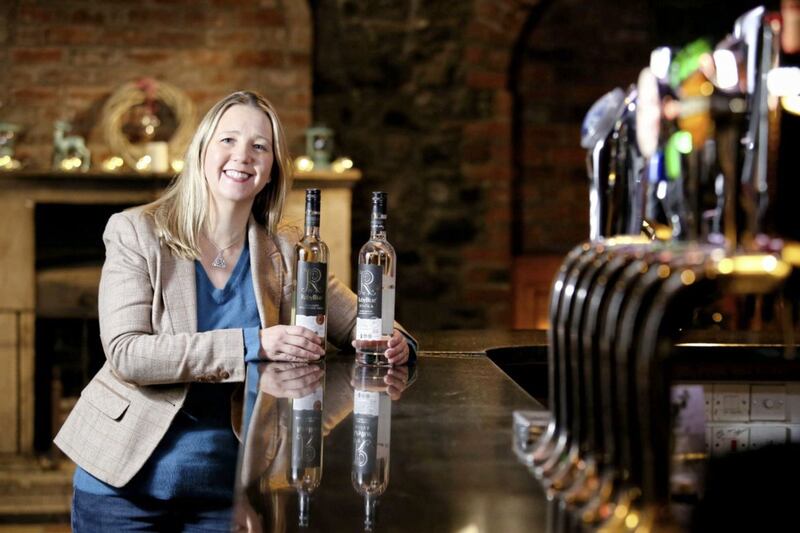WHERE do you start when making your own gin? Juniper berries, apparently, and there were large sackfuls of the small, unremarkable little seed cones waiting to do their metamorphic turning-spirit-into-gin trick when we arrived at the Stillhouse in Moira.
Complete novices at 'gin class', we are here at the invitation of owner, Barbara Hughes, who recently opened Northern Ireland's first gin and spirit school at the village bar/restaurant (formerly The Four Trees) which she and husband, Stuart, took over a year ago to showcase their craft.
The couple first started up a micro-business from the kitchen of their Dromore home in 2010, jacking in their jobs in "a moment of madness" to concentrate on craft spirits production and developing their award-winning drinks brand, Ruby Blue.
As parents of three young children, it was a brave decision – especially in the middle of a recession – but one they have never regretted, going on to win high profile awards for home-made berry liqueurs and vodkas and exporting to exclusive outlets, including Fortnum and Masons in London and others in Russia, Australia, Lebanon, and Finland.
With innovation their constant watchword, they also created Northern Ireland's first alcohol-free gin and now, in response to the public's appetite for the 'super' drink made from 'super berries', Barbara has opened a small distillery, allowing first-timers to concoct their own version of what's become our favourite tipple.
The spirit used – made from potato and grain – is already ready and bubbling in the small copper stills dotted around the room when class members arrive, welcome drink in hand, and perch on wooden stools ready to smell, weigh, blend, taste, bottle and name their own, uniquely flavoured gin.
I'm not sure if juniper berries really are as good for you as some of the articles claim – they are said to relieve pain from achy joints and even reduce wrinkles due to antioxidant properties – but in terms of relaxation, the benefits of a G&T with ice and slice of lemon are (anecdotally) well documented.
So, purely in the efforts of gaining a smoother, glowing skin and enjoying all the health bonuses associated with what people in the Middle Ages used as a form of herbal medicine, we ventured over to the mysterious sacks and prepared to select our ingredients.
Anything between six and nine botanicals are recommended, with the dominant one always having to be juniper berries – the one essential which allows gin to be called 'gin'.
The rest you can make up yourself, choosing between lemon and orange peel, cassia bark, cardamon pod, coriander seeds, lavender and rose petals, with the only proviso being that you include a 'fixator' of angelica or orris root to bind the different flavours.
And, depending on the delicate balance, you will, theoretically, end up with either a 'floral', 'classic' or 'alternative' gin recipe which is transferred to a 700ml bottle to take home – and not open for at least two weeks while the flavours settle.
With Barbara having already carried out all the prep on your behalf, it proves a relaxing few hours and after each botanical is weighed and transferred into a tiny sack, all you have to do is immerse it in your shiny still, top up with water, and just wait...
This is the fun bit of the class because while the temperature rises and the new liquid begins to drip into an attached container, staff will serve a selection of professional versions they made earlier in the nearby StillHouse bar.
These are served with delicious canapes lovingly created by head chef Dave McClelland, while Barbara shares various fascinating snippets of information about our venue – once an old coach house with mysterious tales etched deep into its stone.
"From creating the recipe, choosing the ingredients, distilling your own gin or vodka, choosing a name for the label and then bottling your creation to take home, it’s a very exciting thing for everyone in each class," Barbara says. "Local people have shown so much support for our small-batch spirit production over that last few years that we developed our own curiosity of the distilling process and the ingredients involved.
"Home distilling is illegal in many countries, including the UK and Ireland, but we’ve taken care of all the licensing, legalities, duties and taxes within the cost of the experience.
"It really is wonderful to see everyone's delight at being back at 'school' for a few hours – although, I have to say, cocktails and canapes were never on our dinner hall menu."
:: The class lasts for around 150 minutes and includes a tour of Hughes Craft Distillery. For more information, visit stillhousemoira.com



